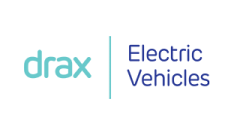Drax Energy Solutions

The prospect of saying goodbye to your trusted internal combustion engine (ICE) maintenance, delivery and operations vans might still feel hugely uncomfortable. But, with the 2030 ban on the manufacture and sale of new ICE vehicles, it’s going to happen sooner or later – and doing it sooner offers business benefits.
Fear of the unknown
Organisations’ electrification discomfort is slowing the UK’s van transition down. Just 0.9% of the country’s vans were electric last year, according to the Logistics UK report.
The concerns holding organisations back include EV vans’ payload capacities, single-charge driving distances and potential driver resistance. They also include worries over whether the UK’s charging infrastructure’s adequate.
However, fleet electrification – while a potentially expensive and disruptive transformation – brings with it opportunity. Electric vans offer a visible symbol of an organisation’s sustainability commitment, reduce organisations’ carbon footprints and help save on longer-term operational costs.
Addressing the concerns
Many of the concerns organisations have about switching to electric vans are unfounded or outdated.
In terms of payload, the fear’s that, with EV batteries making electric vans heavier than their ICE counterparts, it won’t be possible (or legal) to carry as much in them. The law in the UK used to limit the weight of loaded vehicles standard-licence holders could drive. However, the government has introduced a concession for EVs allowing for an extra three-quarters of a tonne.
“Can an electric van cover the distances I need it to without me having to stop and charge?” The familiar question regarding EV range is less and less relevant as manufacturers introduce vans able to travel further on a single charge. Fleet management company Webfleet recently set a new world record – an unmodified Fiat E-Scudo travelled 311 miles without needing to recharge!
An organisation’s efficiency – and success – often lies in the hands of its drivers. But fears of driver reluctance to electrify could be misplaced. Recent research by Churchill Expert, Direct Line Group’s specialist fleet insurance provider, suggests approximately 70% of van fleet drivers would prefer to drive electric.
The UK’s behind its target to introduce 300,000 public-facing charge stations before 2030, but lack of infrastructure needn’t be the barrier that prevents electrification. Realistically, converting a fleet of ICE vans to EVs will require an accompanying charging infrastructure investment. Investing in charging facilities – either across a network of sites or even at drivers’ homes – will keep your fleet on the move. It’ll also reduce the strain on the UK’s public-facing facilities.
Plan for success
Planning and investing wisely is crucial to the success of your van fleet’s electrification. Expert partners can offer upfront advice to set you off on the right road and end-to-end support to make sure you don’t take wrong turns along the way.
Drax Electric Vehicles offers an EV suitability assessment to help you prove the value of electrification and organise your transition plan – it doesn’t have to happen overnight. Analysing your existing vehicles’ operational requirements also reveals how best to implement your own charging facilities.
To help allay any remaining driver (or internal decision-maker) anxieties, Drax can arrange test/driving days so you can experience the vehicles and understand the charging hardware.
Added benefits
Fleet electrification isn’t just for beating the 2030 ban. It offers a number of benefits that could give your organisation competitive advantage before the decade’s out.
Firstly, EVs emit zero exhaust emissions. You can aim to power your van fleet with renewable source electricity, or, even better, energy your organisation generates renewably on-site. Switching to an electric fleet will reduce the emissions you have to report and boost your sustainability credentials and net-zero progress.
Secondly, there’s the positive associations customers, prospects and the wider public will make when they see your green vehicles. EVs offer excellent PR opportunities, particularly when you report them in conjunction with other net-zero efforts.
Thirdly, electrification offers operational cost savings. Beyond the initial associated expenditure, consider the ‘total cost of ownership’ for EVs compared to ICEs. EVs’ fuelling costs are lower, as (generally) are their maintenance costs – courtesy of fewer working parts – and they’re exempt from congestion and clean-air charges. To help reduce upfront outlay, government grants can support with the cost of buying and installing charge points.
Don’t go it alone
Another reason organisations postpone electrification is complexity – both real and perceived. Transitioning a fleet of vans that’s operationally efficient can seem hazardous. There’s lots to consider and it’s easy to feel paralysed about where to start.
Engaging an electrification partner can take the strain out of fleet transformation. Collaborating with a specialist like Drax Electric Vehicles will help you plan your transition, secure internal support, manage implementation and optimise benefits. It’ll also help minimise disruption to your business-as-usual operations – and enable you to focus on other business priorities, too.
